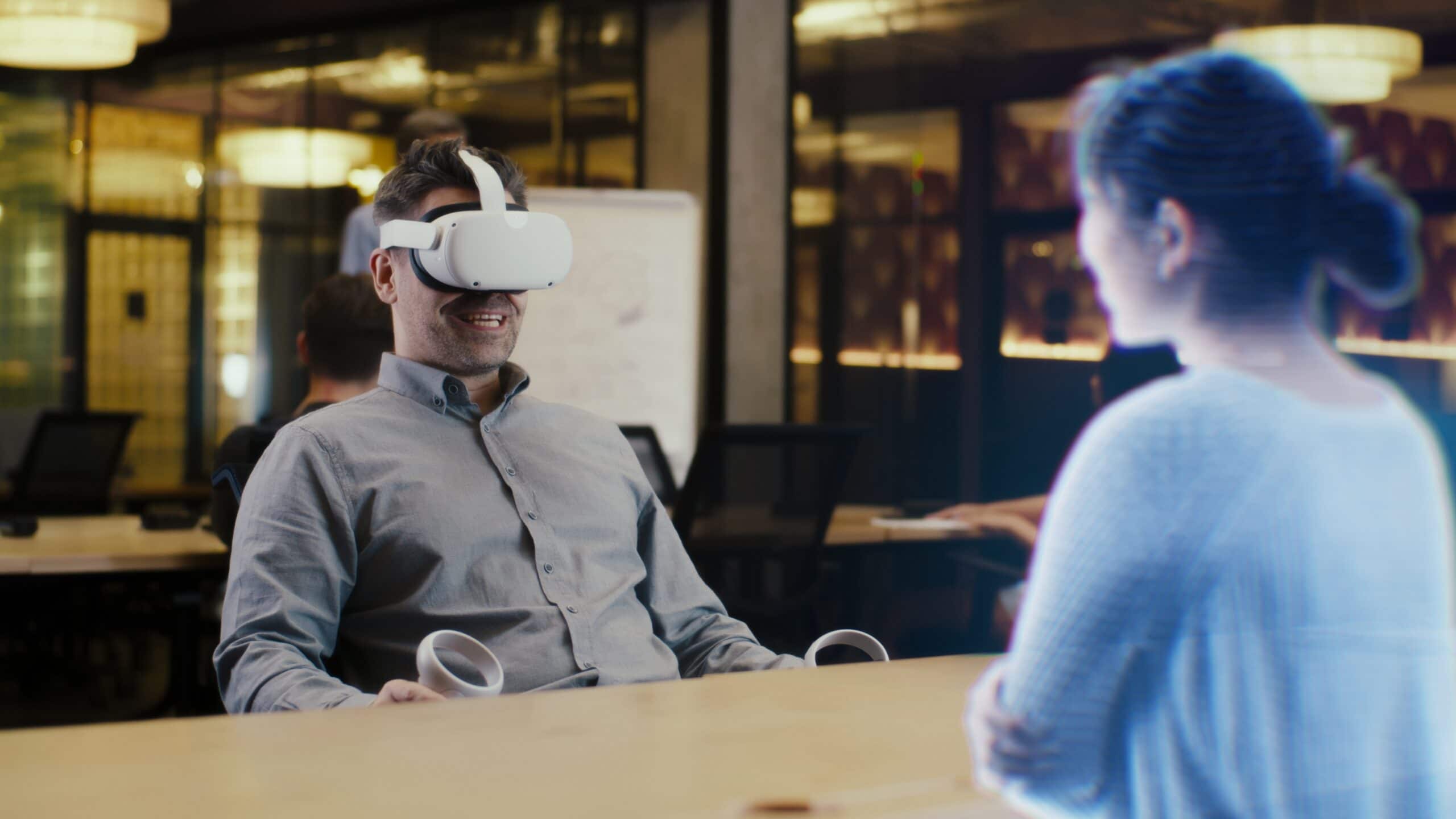- Why is virtual reality useful for training?
- How can virtual reality help to evaluate skills?
- Training HR professionals in virtual reality
For organisations to be successful, their workforces must be sufficiently skilled. While hiring qualified workers is vital, some form of training for the specifics of a role is needed in most cases. However, training can be difficult to carry out effectively; it is time-consuming, and managers or senior employees cannot always take large amounts of time out of their workdays to teach new hires. This means that training courses often lack practical activity and may involve simply sitting an employee in front of a computer where they read, watch videos, and take tests on what they have learnt. Unfortunately, this often doesn’t translate to building real skills that can be used effectively in real workplace situations. Different people also have different learning styles, and what keeps one employee engaged with training may be very different from what works for the next.
Why is virtual reality useful for training?
While there are limitations to computer-based training programmes, there are also proven benefits. It is not always possible or suitable to carry out on-the-job training, so traditional virtual training – such as online videos and assessments – is a useful alternative. Virtual reality (VR) training is growing in popularity – not only due to the increasing accessibility of the technology but also due to its ability to combine the benefits of practical learning with the convenience of virtual tuition. VR enables employees to practise their skills in realistic scenarios without any of the potential risks to operations or health and safety that might occur if they were training in ‘real’ spaces. For example, healthcare workers can learn to develop their skills in simulated spaces before risking the health of real patients. VR can also significantly reduce training costs and even allow training to be carried out remotely. The Bank of America has implemented a training programme that has helped its 50,000 employees practise communication skills with clients and colleagues virtually – this training has produced outcomes four times faster than traditional methods.
VR training has also been linked to improved learning outcomes and increased efficiency in the act of learning itself. A study by the University of Maryland discovered that people recall information more effectively when it has been presented in a virtual environment, rather than on paper or a 2D computer screen. Implementing VR training has been connected with a 10 to 15 per cent increase in assessment scores and has also been shown to reduce injury rates in high-risk workplaces – one study found a reduction of 43 per cent.
How can virtual reality help to evaluate skills?
As well as improving learning, VR can help employers and HR departments to evaluate employee progress in training more effectively. On a practical level, teachers can quickly and easily join workers remotely in virtual spaces, which enables them to supervise and monitor the training process and provide instant feedback or advice – regardless of where they are located. This can be particularly useful for organisations that aren’t based around a specific physical workplace. Training can even come from a centralised department and be offered to employees all over the world.
Another particular advantage of VR training is the amount and scope of useful data that can be captured. VR assessments can record not only the time taken to complete tasks and whether they were completed successfully but also a range of other metrics, such as location and the body language of employees. This data can be analysed in granular detail to determine employee strengths and weaknesses in particular roles to predict their future performance and can even be used during application processes to assess the suitability of a candidate.
Training HR professionals in virtual reality
HR departments can train and evaluate employees using VR, but the technology can help them as well. Scenarios can be created by filming actors, with HR professionals then interacting with the footage in an immersive, 360-degree virtual space. This results in greater feelings of connection and investment in the training experience than just passively watching a video. Team members can practice their responses to specific HR-related issues in VR, so they are better prepared when those situations arise in the real workplace.
Closing thoughts
VR training offers many advantages for coaching, learning, and evaluating. It combines the convenience and cost efficiency of traditional virtual training with the immersion and engagement of on-the-job tuition. Large amounts of detailed data can be captured during VR training, which can then be analysed to make the evaluation process more accurate. These benefits mean that the popularity of VR training is likely to continue growing.




